Is Macau a real place?
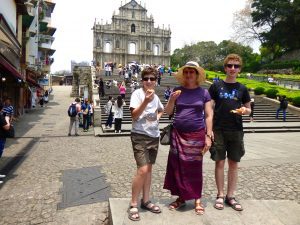
So here’s the question we have been debating: If it has its own currency, own visa system, own domain name, own everything really does it count as a separate country?
We got to Macau on a hydrofoil that smoothly sped between the South China Sea islands. That was a bit of a relief as getting on the ferry, and through immigration especially, was a disorganised mess which drove home yet again that in Hong Kong these days very few people speak English.
It only took an hour to get there, which made just how different Macau is immediately surprising. We walked from the ferry terminal into the city after fending off the touts offering tours. Declan did a good job directing us on a paper map – something we have decided is a necessary life skill in this age of Google Maps.
At first the place seemed very Chinese, with parks with exercise equipment and so on. But as we got into the city proper the Portuguese influence became obvious. The buildings started to look like they’d been airlifted from Europe and all the street signs are in both Chinese and Portuguese. That said, the Portuguese influence does seems like a fading echo though, a backdrop on which the more modern Chinese palette is being painted in.
The symbolic thing to see in Macau is the ruined facade of the cathedral, St Pauls. It’s very pretty, but is literally a single facade, so completely two-dimensional. It sits beside the old fortress which provides a good view of the town. Standing on the fort and looking out you’re surrounded by a mass of shabby mid-rise buildings from which suddenly these huge, futuristic sky-scrapers, the casinos, erupt like spears thrown into the ground.
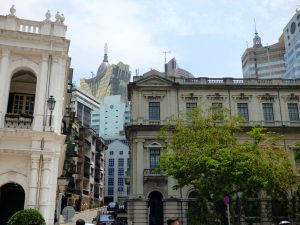
The casinos are what generally make Macau a destination and they, as buildings, go from the amazing to the ridiculous. The fading European feel of the old town around the fortress slides into truly weird when you see the Eiffel Tower jammed close by the Colosseum and Venice’s Rialto Tower. The sense that the entire place is one huge fake is hard to escape.
Running down from the fort is a pedestrian area that leads to the Senado Square. It proved to be a big disappointment, as we were expecting and hoping for a European-type square with somewhere to sit and eat. Instead the square and surrounding streets are lined with expensive shops interspaced with places selling rolled jelly to the predominantly mainland Chinese day-trippers. Finding somewhere to sit seemed impossible, although we did manage to find some Portuguese tarts, for which Macau is famous, and they were very good.
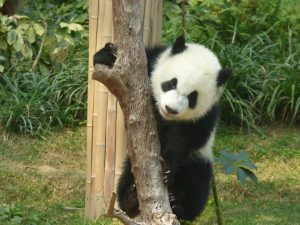
The highlight of our Macau journey was going to the Giant Panda Pavillion which houses, you guessed it, giant pandas. Although we’ve seen pandas before, we’ve never seen them so close or so active. The young ones in particular were a delight. It’s extraordinary how much they trip over their own feet or get down from a tree or ledge by just bonelessly flopping to the ground. The adults seem more serious when you see their teeth in action stripping bamboo, but otherwise don’t seem much more coordinated than their offspring.
Visiting the casinos was never on the agenda for our Macau visit, so we meandered back from there and zoomed back to Hong Kong on the ferry continuing to debate the status of Macau as a country. Technically it’s clearly not a country, but in every practical way from currency to border control it is. So it’s a fake country – which pretty much summed up our view of the place. Real pandas though.



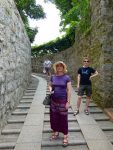

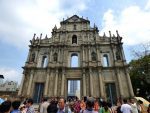
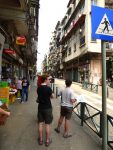
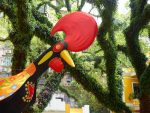
As always, interesting and thought provoking. But we need pictures of Evan with the boys as well!,